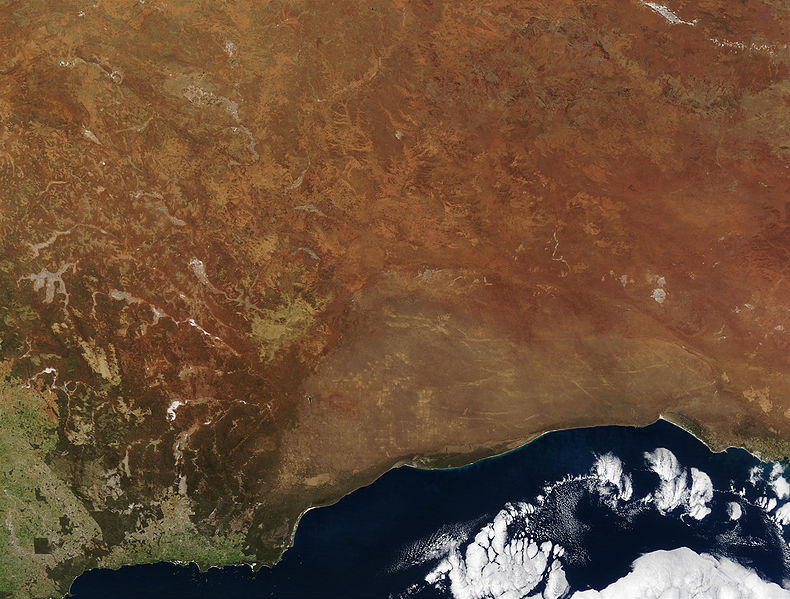 The first (European) name Australia was ever given was “′t Landt van Pieter Nuyts” or Pieter Nuyt’s Land. Nuyts was a Dutch East India official on board the VOC ship “Golden Seahorse” when it mapped the coast of the continent from Albany to Ceduna in 1626. Fortunately the name didn’t stick. The next European to venture that way was explorer Edward John Eyre who crossed it with a party of Aboriginal men some 200 years later, suffering extreme hardship on the way.
The first (European) name Australia was ever given was “′t Landt van Pieter Nuyts” or Pieter Nuyt’s Land. Nuyts was a Dutch East India official on board the VOC ship “Golden Seahorse” when it mapped the coast of the continent from Albany to Ceduna in 1626. Fortunately the name didn’t stick. The next European to venture that way was explorer Edward John Eyre who crossed it with a party of Aboriginal men some 200 years later, suffering extreme hardship on the way.
The photo above is courtesy of the public domain, Wikipedia. The lighter brown shows the size and extent of the Nullarbor Plain, as seen from space. It’s way bigger than what you imagine driving through it on a strip of bitumen. (Credit Jacques Descloitres, MODIS Rapid Response Team, NASA/GSFC)
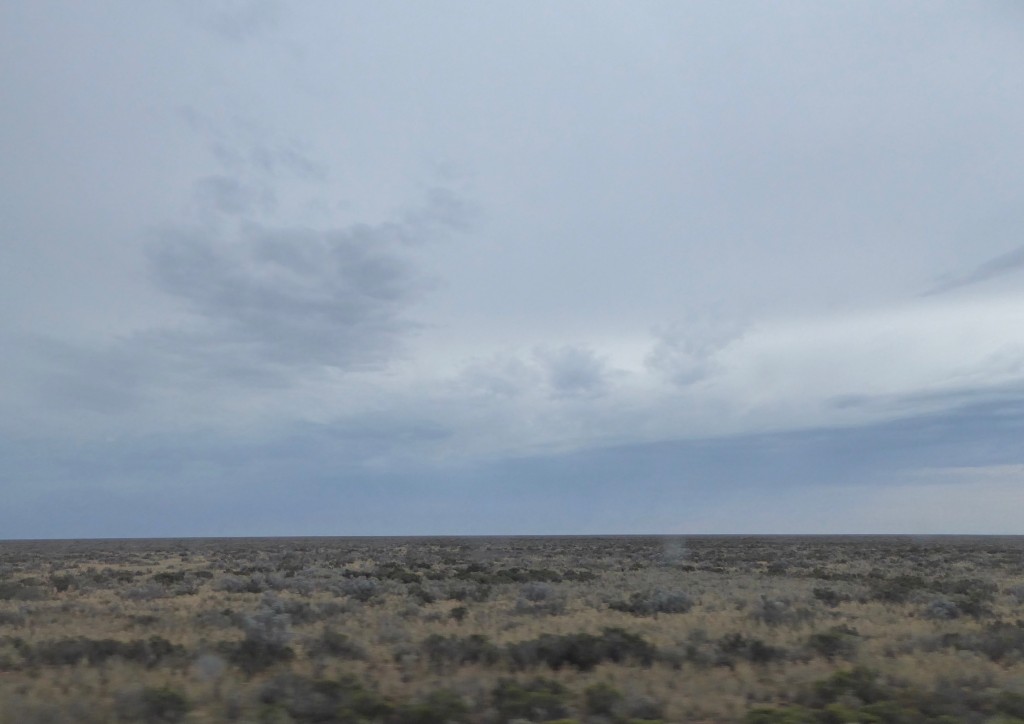 Fortunately we had a slightly easier time of it than Eyre did. “Crossing the Nullarbor” is one of those pilgrimages Australians do – it’s like visiting Ayers Rock or the Great Barrier Reef, or Cape York. ‘Nullarbor’ means ‘no trees’ in Latin, and there are sections of it where you can see nothing but grass and sand to the horizon, at least from the perspective of the highway, but mostly it’s low scrub with occasional spindly trees. For most people it’s a once in a lifetime trip, and it has a certain romance attached to it, but in reality it’s an easy drive in an air-conditioned car with a conveniently placed roadhouse every couple of hundred kilometres. Unlike the sign at the Penong general store at the eastern end of it would suggest!
Fortunately we had a slightly easier time of it than Eyre did. “Crossing the Nullarbor” is one of those pilgrimages Australians do – it’s like visiting Ayers Rock or the Great Barrier Reef, or Cape York. ‘Nullarbor’ means ‘no trees’ in Latin, and there are sections of it where you can see nothing but grass and sand to the horizon, at least from the perspective of the highway, but mostly it’s low scrub with occasional spindly trees. For most people it’s a once in a lifetime trip, and it has a certain romance attached to it, but in reality it’s an easy drive in an air-conditioned car with a conveniently placed roadhouse every couple of hundred kilometres. Unlike the sign at the Penong general store at the eastern end of it would suggest!
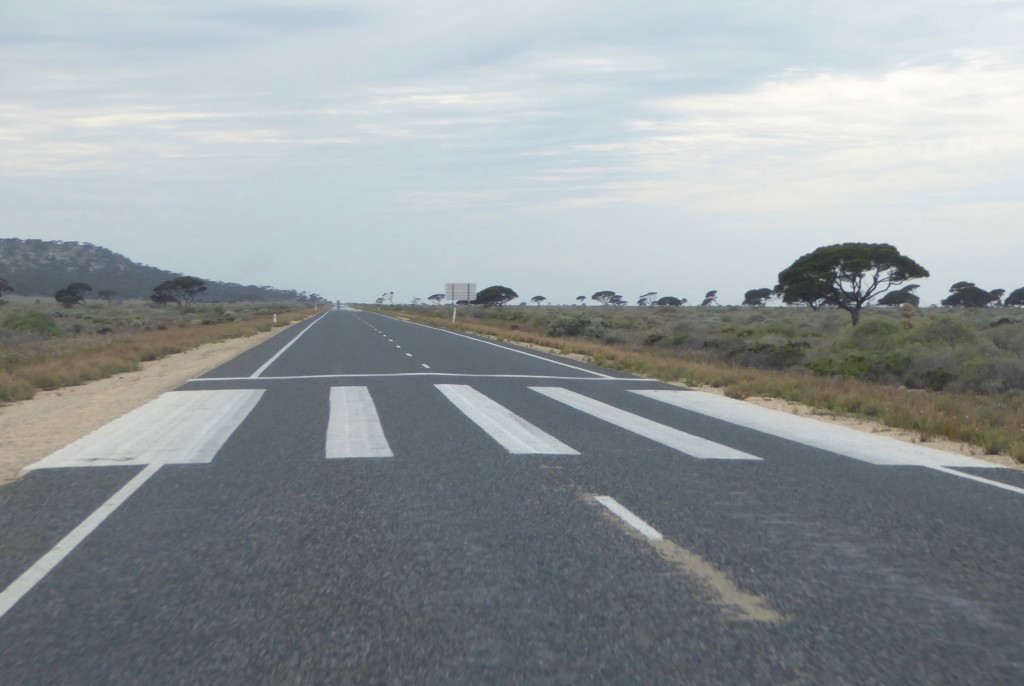 Every hundred or so km, on a straight stretch (and there are a few of those), you see these stripes painted on the road, about a kilometre apart. They’re landing markers for the Royal Flying Doctor service. Clever use of a remote highway, and a lot more sensible than maintaining airstrips.
Every hundred or so km, on a straight stretch (and there are a few of those), you see these stripes painted on the road, about a kilometre apart. They’re landing markers for the Royal Flying Doctor service. Clever use of a remote highway, and a lot more sensible than maintaining airstrips.
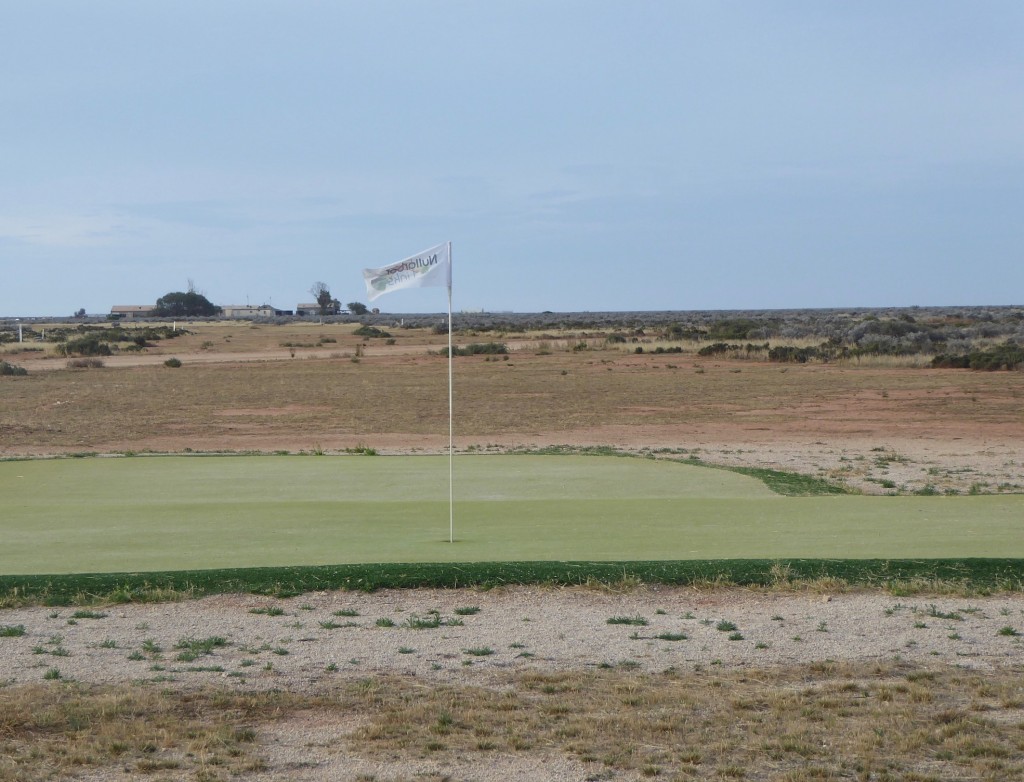 We camped the night at Nullarbor roadhouse, behind the pub, and almost beside the ‘green’ on Number 5 hole of the Nullarbor Golf Links. You can play 18 holes of golf from Kalgoorlie to Ceduna (or vice versa), on what must be the longest and most remote golf course in the world. There’s definitely more rough than fairway though!
We camped the night at Nullarbor roadhouse, behind the pub, and almost beside the ‘green’ on Number 5 hole of the Nullarbor Golf Links. You can play 18 holes of golf from Kalgoorlie to Ceduna (or vice versa), on what must be the longest and most remote golf course in the world. There’s definitely more rough than fairway though!
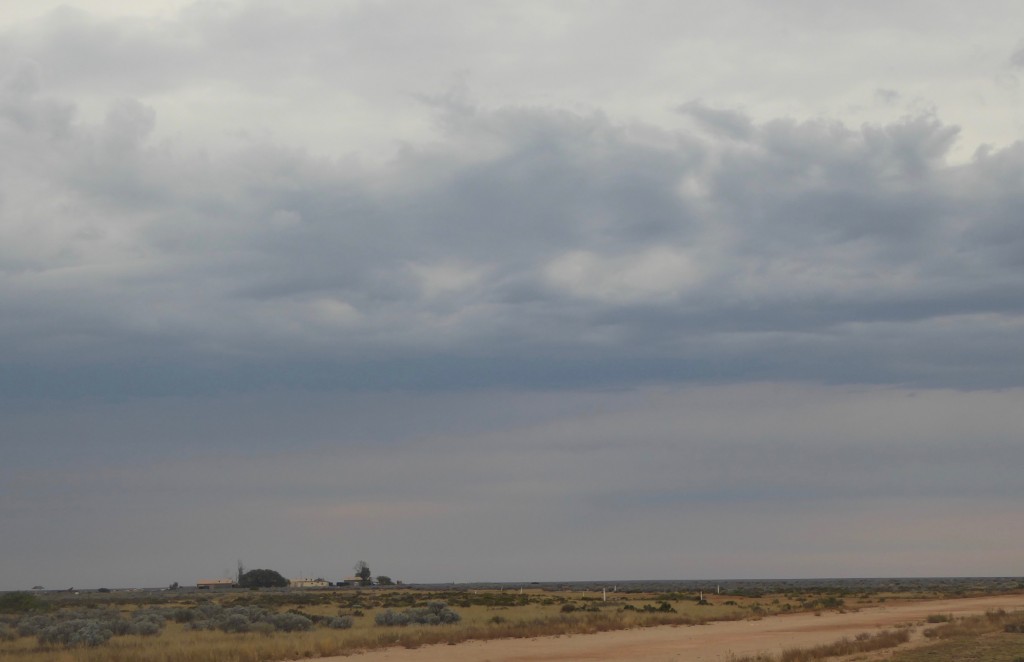 This is the old Nullarbor homestead, across the airstrip. We might have been sleeping “in the desert at night, with a million stars all around” like the Eagles’ song says, but it was totally cloudy and grey, and sadly no stars. It didn’t auger well for the highlight of the Nullarbor, which was first thing next morning – visiting the Head of the Bight. We can’t really complain, as we’ve had such perfect weather for so much of this trip, freezing windblown tents aside. And as we discovered, no kind of weather could detract from the feeling of standing right at the point where the Southern Ocean reaches the furthest northward into the Australian continent – the Head of the Bight.
This is the old Nullarbor homestead, across the airstrip. We might have been sleeping “in the desert at night, with a million stars all around” like the Eagles’ song says, but it was totally cloudy and grey, and sadly no stars. It didn’t auger well for the highlight of the Nullarbor, which was first thing next morning – visiting the Head of the Bight. We can’t really complain, as we’ve had such perfect weather for so much of this trip, freezing windblown tents aside. And as we discovered, no kind of weather could detract from the feeling of standing right at the point where the Southern Ocean reaches the furthest northward into the Australian continent – the Head of the Bight.
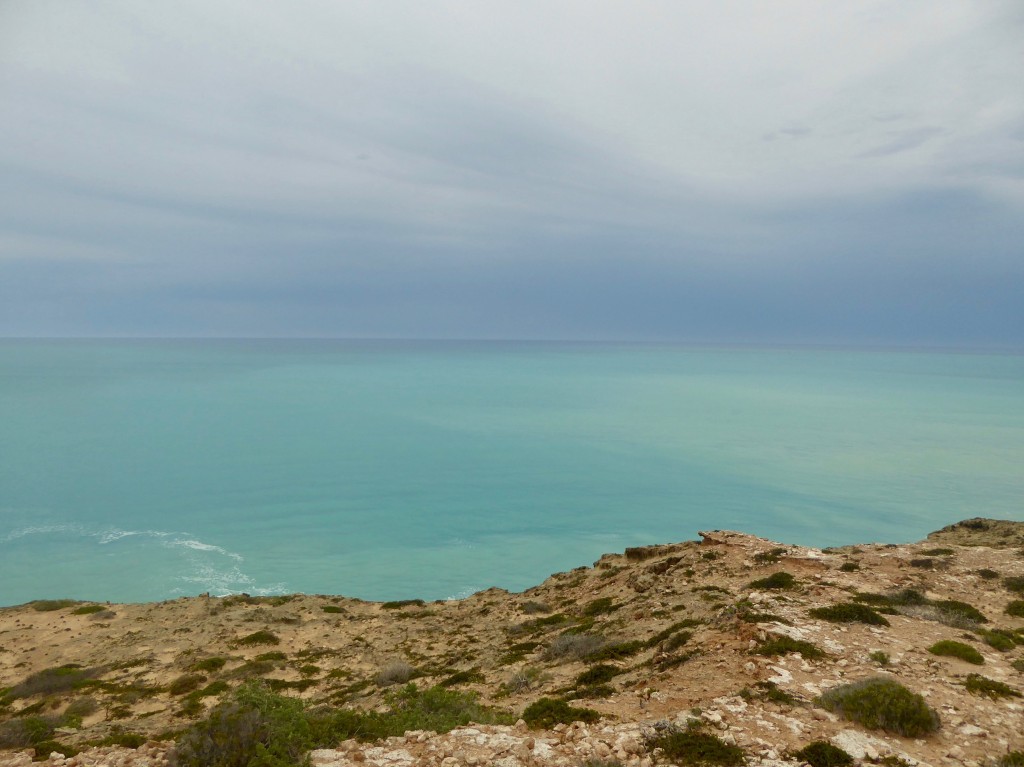 Looking straight out to sea – south into the Bight (above) and into the incoming weather.
Looking straight out to sea – south into the Bight (above) and into the incoming weather.
 (Above) The view looking west.
(Above) The view looking west.
It’s a dramatic and inspiring piece of country. And, it’s the exact point where the high rugged cliffs give way to sand dunes. Looking west it’s all vertical cliffs and jagged rock, and when you turn to look east, it’s completely different.
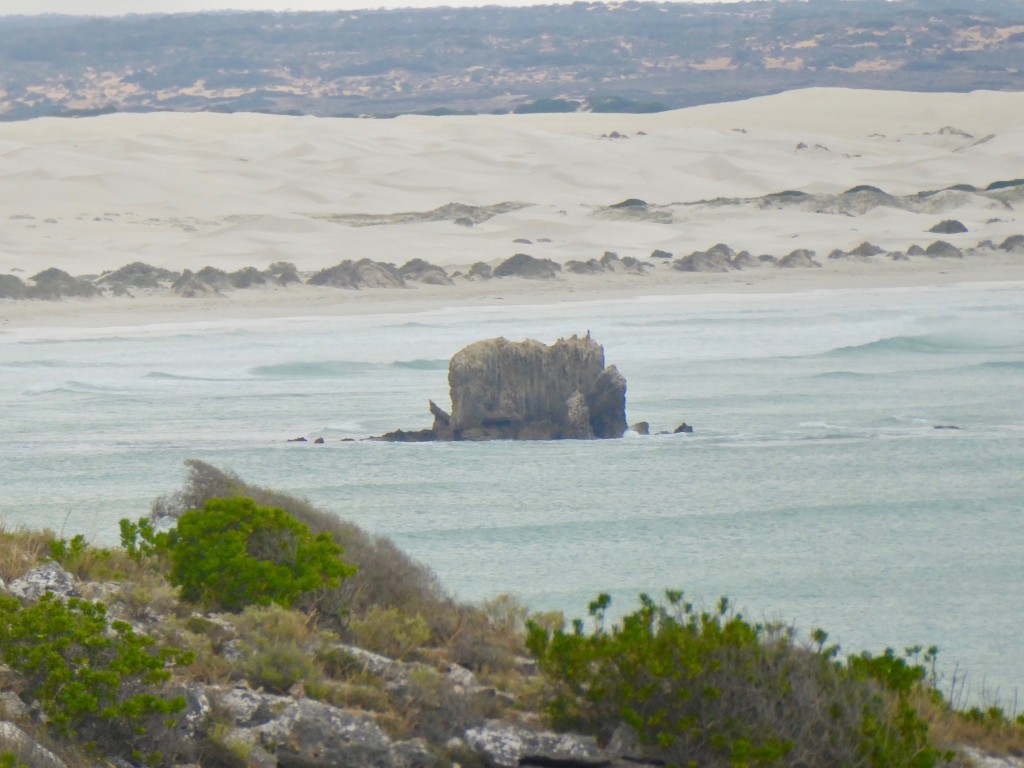
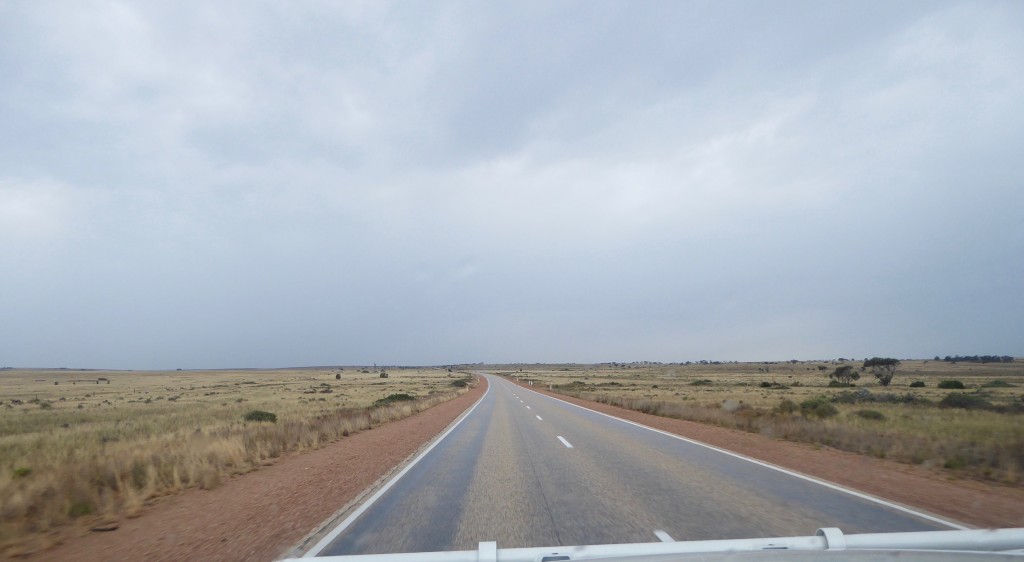 Leaving the Bight and reaching the edge of the Nullarbor Plain felt like we were reaching the end of the adventure. The first sign of civilisation is Penong, 1000km from the last town – Norseman in WA. It’s a small place, and we didn’t meet anyone bar a grumpy service station owner, but his wife makes the BEST meat pies in the country. They were hot, huge and delicious. A short drive further on, the quarantine station at Ceduna caught us by surprise – we’d restocked with fruit and veg at Esperance, and lost most of it here. It was fortunate we’d had a good lunch already! We turned left after a drive around the town, and headed down into the Eyre Peninsula.
Leaving the Bight and reaching the edge of the Nullarbor Plain felt like we were reaching the end of the adventure. The first sign of civilisation is Penong, 1000km from the last town – Norseman in WA. It’s a small place, and we didn’t meet anyone bar a grumpy service station owner, but his wife makes the BEST meat pies in the country. They were hot, huge and delicious. A short drive further on, the quarantine station at Ceduna caught us by surprise – we’d restocked with fruit and veg at Esperance, and lost most of it here. It was fortunate we’d had a good lunch already! We turned left after a drive around the town, and headed down into the Eyre Peninsula.
Streaky Bay is a place I’ve always wanted to see. It’s a much more attractive place than Ceduna, with a bigger town centre and business area. We pitched our tent in the Council caravan park, one row of caravans back from the beach. Before this trip, it had been a long time since we’d stayed in caravan parks, and it’s been interesting to see the different approaches to camp kitchens. They used to be dodgy-looking places you wouldn’t feed your dog in, but now they are (mostly) very salubrious and useful. We were eating dinner and watching tv in the comfortable lounge of this one, when Lex decided to go and check the tent, as the wind was sounding a bit ominous. He rushed back a minute later to get me to help…
 The photo doesn’t show the wind speed, which was blasting through at about 35 knots. Our poor tent was almost turned inside out and held flat by the force of the wind. We dragged everything out and then struggled to dismantle it (it was a lot darker than it looks here) and finally managed to bundle it behind a building where we could fold it up out of the wind. We headed into town feeling very despondent and found a room for the night, in a pub built in 1862 and still going strong. After such a dramatic couple of hours we decided we needed a restorative drink and headed to the bar, where we stayed till closing, with the congenial publican buying us drinks!
The photo doesn’t show the wind speed, which was blasting through at about 35 knots. Our poor tent was almost turned inside out and held flat by the force of the wind. We dragged everything out and then struggled to dismantle it (it was a lot darker than it looks here) and finally managed to bundle it behind a building where we could fold it up out of the wind. We headed into town feeling very despondent and found a room for the night, in a pub built in 1862 and still going strong. After such a dramatic couple of hours we decided we needed a restorative drink and headed to the bar, where we stayed till closing, with the congenial publican buying us drinks!
Next morning we returned to our camp site (we’d paid for 2 nights) and erected the tent to check the damage, expecting that we’d have to rethink the rest of our travels. We were amazed to discover that it was absolutely fine! We checked the stitching, the tent frame and all the reflexive joints, and there was nothing amiss. It’s a Coleman Dark tent, if anyone wants a recommendation!
The weather forecast was for more of the same, so we bailed and headed for Venus Bay. The unplanned stops are always the best. On the way we spotted a sign that said “Sea Lion Colony – Point Labett” so we made a detour. What a find! It was 45 km down a gravel road which kept out most traffic, and there was no one else there except for one other couple. No flashy signs, no kiosk or toilets or any structure at all except for a lookout platform overhanging a 50 metre drop to the rocks below.
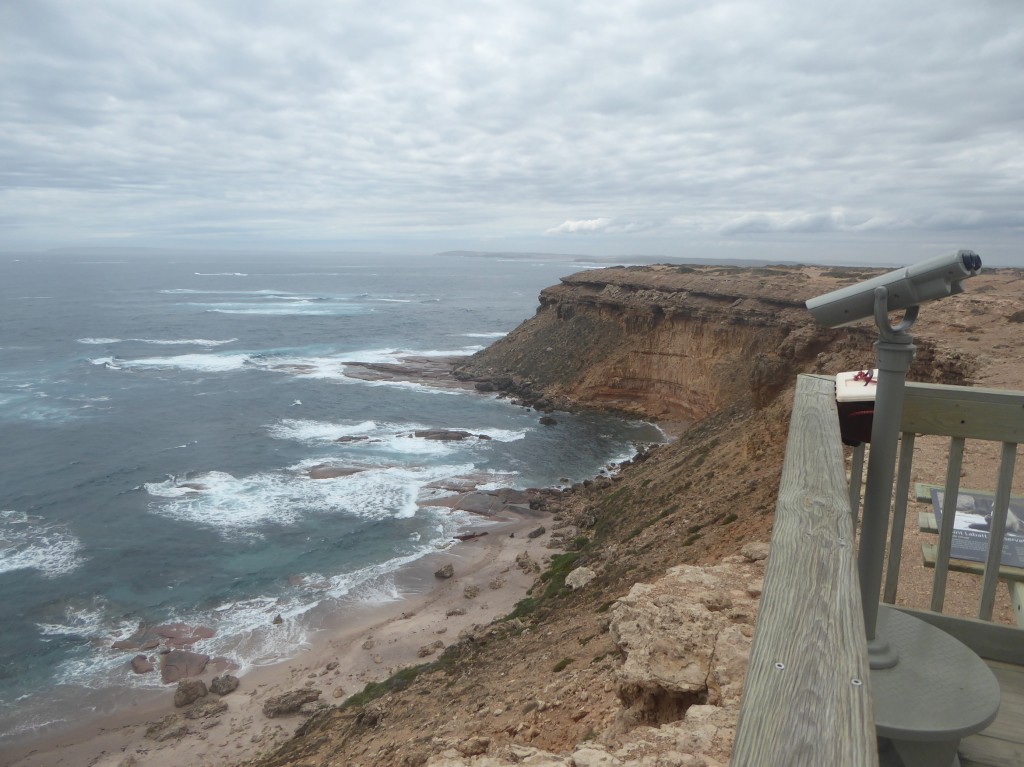 And there were the sea lions… dozens of them. Most were snoozing in the weak sunshine, but there was a lot of challenging and chasing going on between a couple of large males. I took some great videos which I can’t load here unfortunately, but here are some photos to give you an idea…
And there were the sea lions… dozens of them. Most were snoozing in the weak sunshine, but there was a lot of challenging and chasing going on between a couple of large males. I took some great videos which I can’t load here unfortunately, but here are some photos to give you an idea…
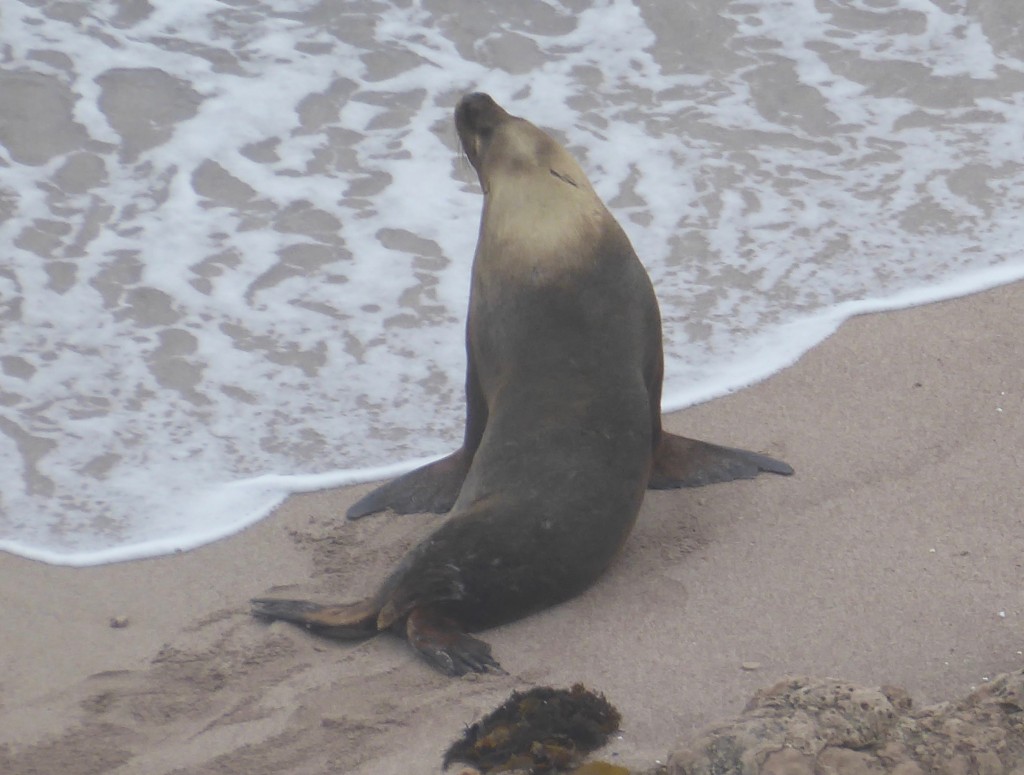
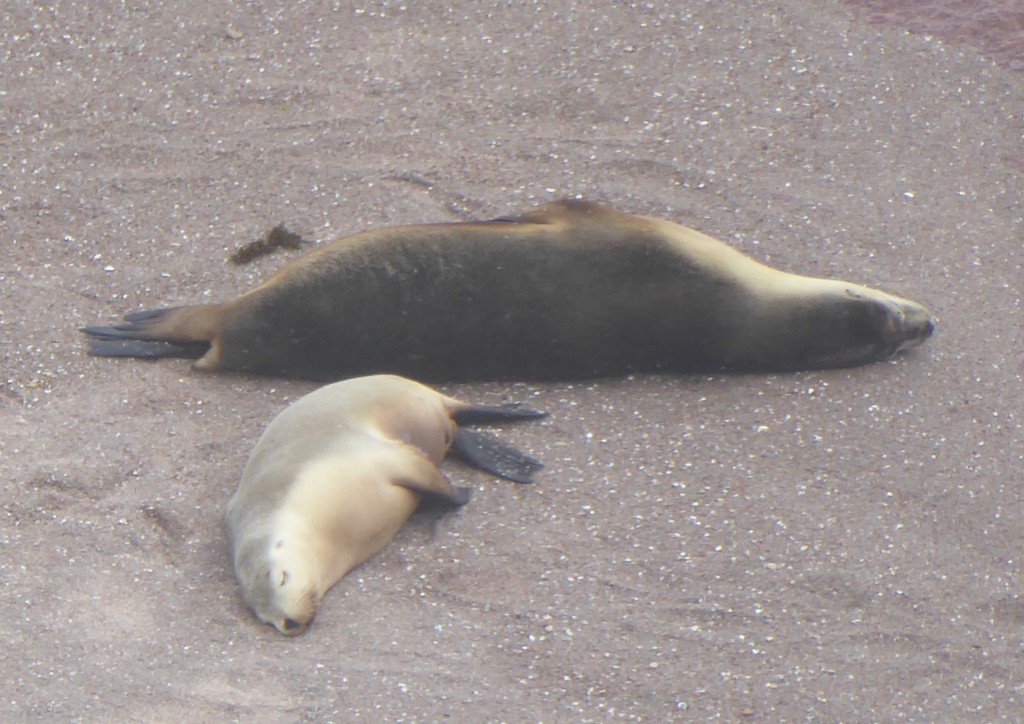
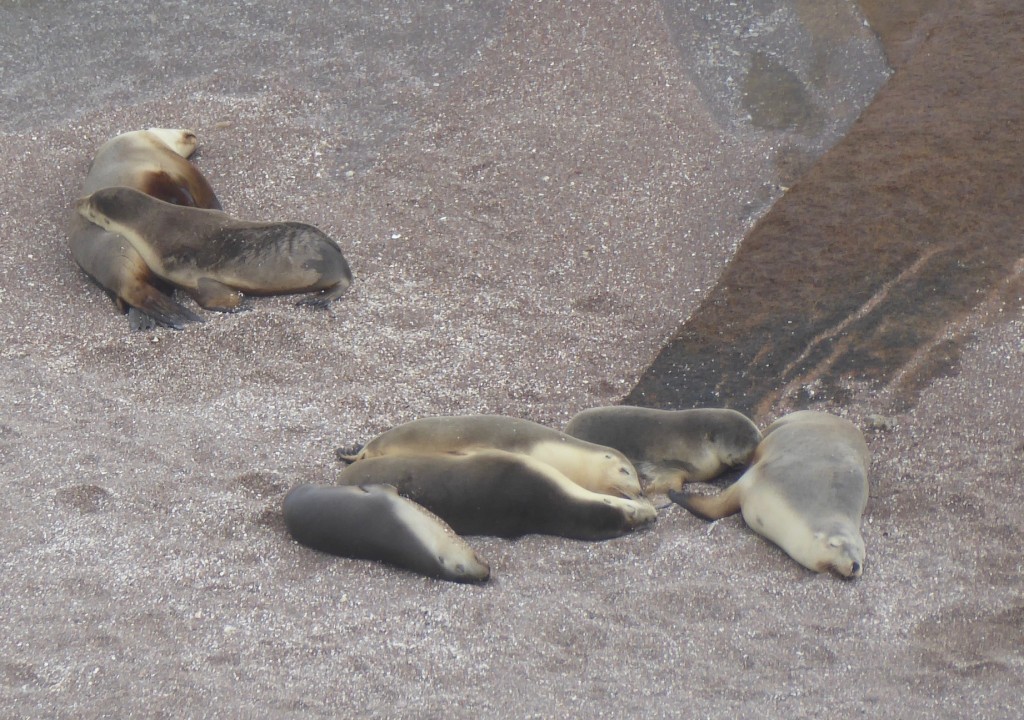 It was so good being in a place where you could observe them from high above, in such isolation – no fees, no commercial crap, just just a well designed, well constructed lookout, with those fixed binoculars and – amazingly – a weatherproof box holding a spray bottle of lens cleaner and a cloth!
It was so good being in a place where you could observe them from high above, in such isolation – no fees, no commercial crap, just just a well designed, well constructed lookout, with those fixed binoculars and – amazingly – a weatherproof box holding a spray bottle of lens cleaner and a cloth!
Further on towards Venus Bay we made another detour. How could you go past a small signpost that said “Murphy’s Haystacks” ?? We couldn’t, and we were very glad we didn’t!


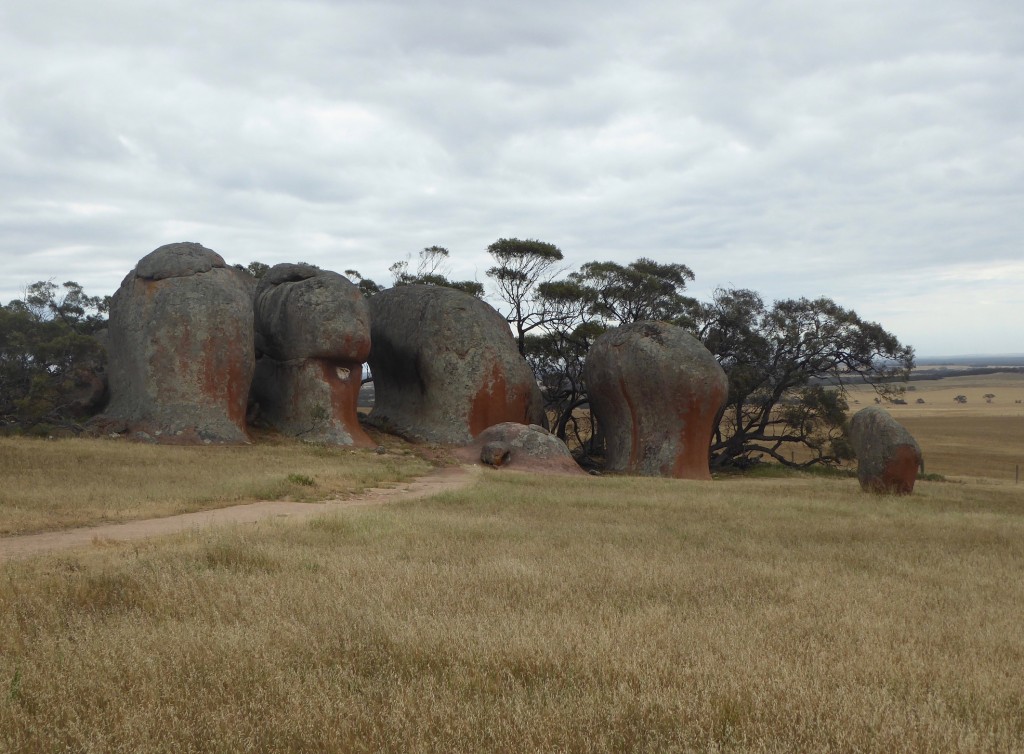 The rocks are a formation called “Inselbergs”. They got their name thanks to a Scottish agricultural expert advising local farmers to harrow their land to grow the best hay. While passing by in a coach he saw the rocks in the distance and informed the passengers that this farmer clearly harrowed his land in order to be able to produce such large and healthy haystacks. Being on Murphy’s farm, the rock formation became known as Murphy’s Haystacks. The current ‘Murphys’ had an honour box for the low visitation fee, but they also sold jars of the most beautiful honey the same way – we bought some too. I’m always reassured by evidence of people’s faith in other people.
The rocks are a formation called “Inselbergs”. They got their name thanks to a Scottish agricultural expert advising local farmers to harrow their land to grow the best hay. While passing by in a coach he saw the rocks in the distance and informed the passengers that this farmer clearly harrowed his land in order to be able to produce such large and healthy haystacks. Being on Murphy’s farm, the rock formation became known as Murphy’s Haystacks. The current ‘Murphys’ had an honour box for the low visitation fee, but they also sold jars of the most beautiful honey the same way – we bought some too. I’m always reassured by evidence of people’s faith in other people.
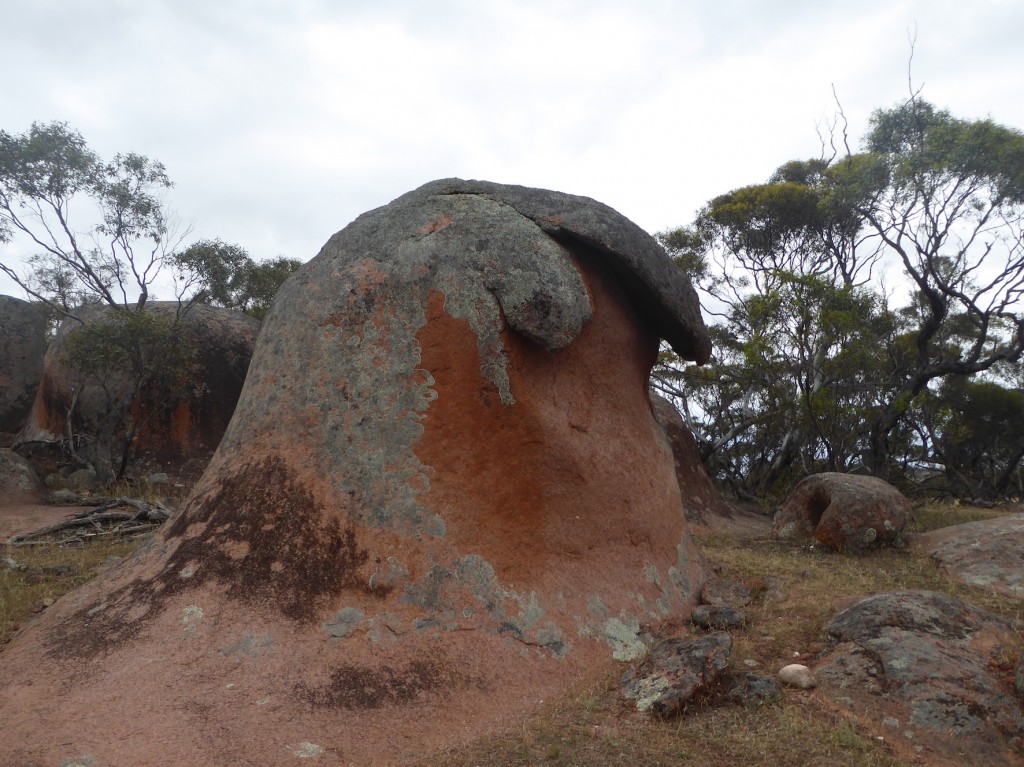 This one looks like a breaking wave. It was a magical place – I wonder what the local Aboriginal people used it for in the old days? There must have been great stories about it.
This one looks like a breaking wave. It was a magical place – I wonder what the local Aboriginal people used it for in the old days? There must have been great stories about it.
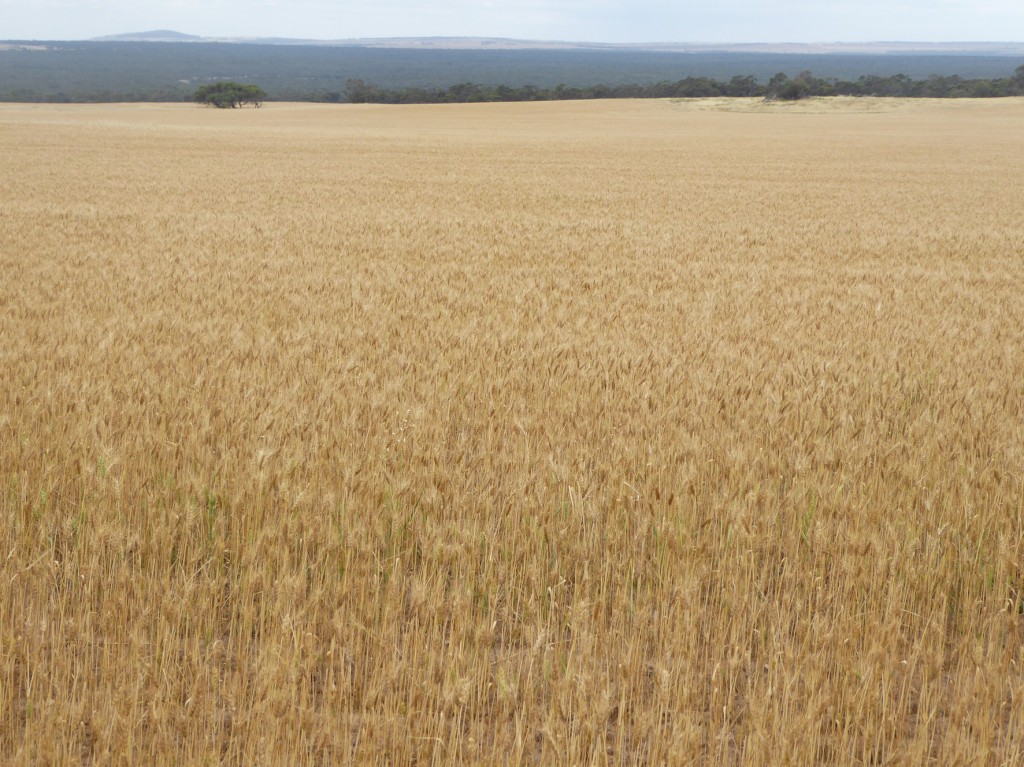 Another sign we were once again closer to the settled parts of the colony, were wheat fields like this one. Venus Bay was our next stop, a tiny little seaside village with a caravan park, a general store and a petrol pump. We tucked our tent in beside a good thick bush, and parked the Prado close behind, tying the tent to the roof rack for extra support, as we’d been warned the weather gods were likely to get angry that night. The wind howled and screeched around us, but the tent stood firm! Just as well – we were the only tent there!
Another sign we were once again closer to the settled parts of the colony, were wheat fields like this one. Venus Bay was our next stop, a tiny little seaside village with a caravan park, a general store and a petrol pump. We tucked our tent in beside a good thick bush, and parked the Prado close behind, tying the tent to the roof rack for extra support, as we’d been warned the weather gods were likely to get angry that night. The wind howled and screeched around us, but the tent stood firm! Just as well – we were the only tent there!
 Dawn brought a very peaceful scene, straight over the camp stove… and lots of bird life - a huddle of pelicans, a sooty oyster catcher, and a lethal-looking Pacific gull. Their beaks look like they have been dipped in blood…
Dawn brought a very peaceful scene, straight over the camp stove… and lots of bird life - a huddle of pelicans, a sooty oyster catcher, and a lethal-looking Pacific gull. Their beaks look like they have been dipped in blood…
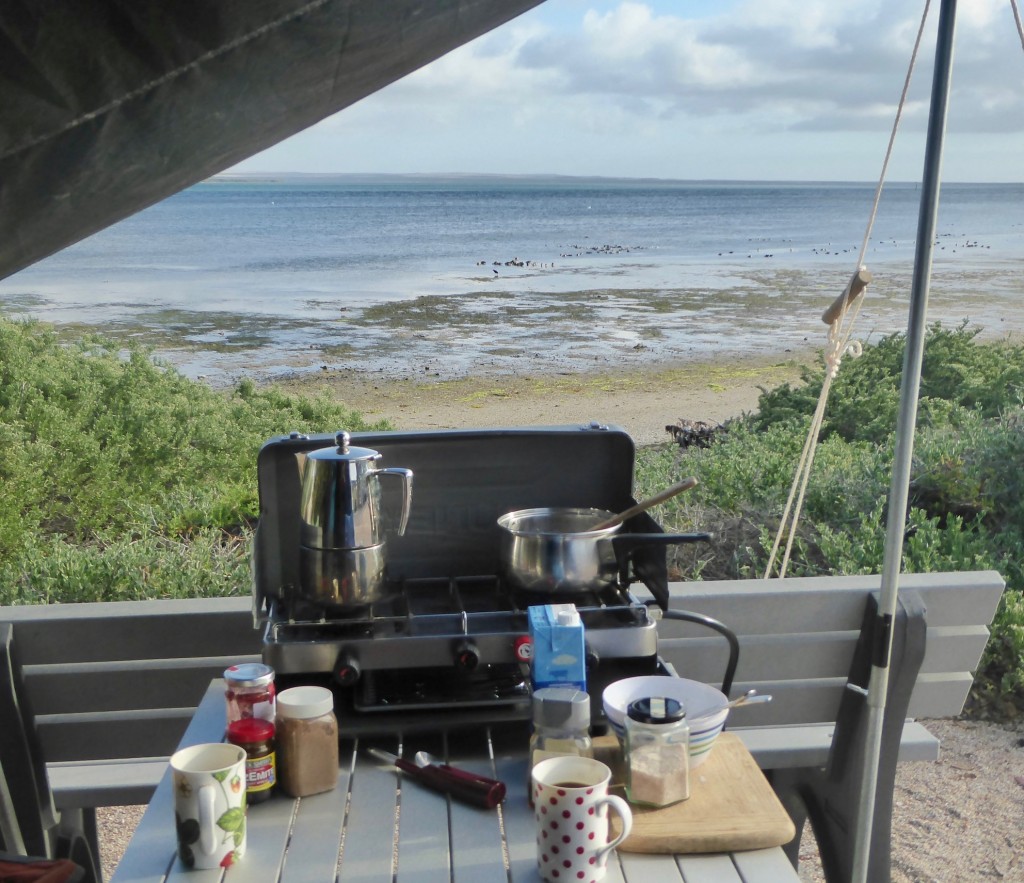
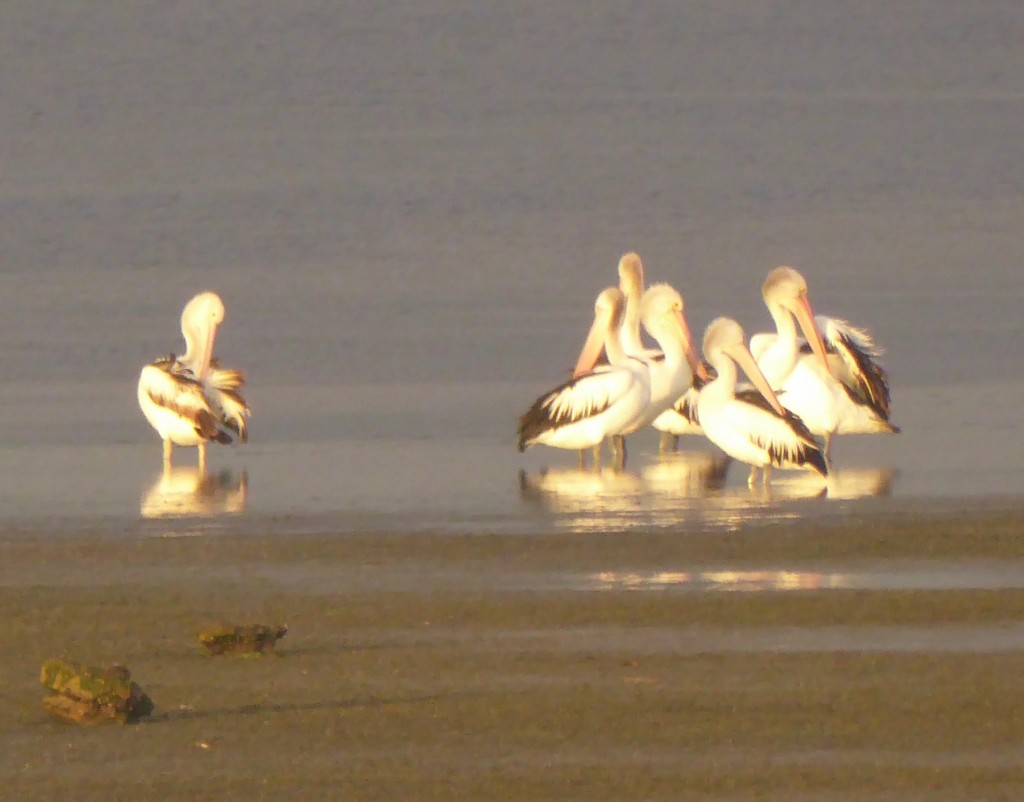
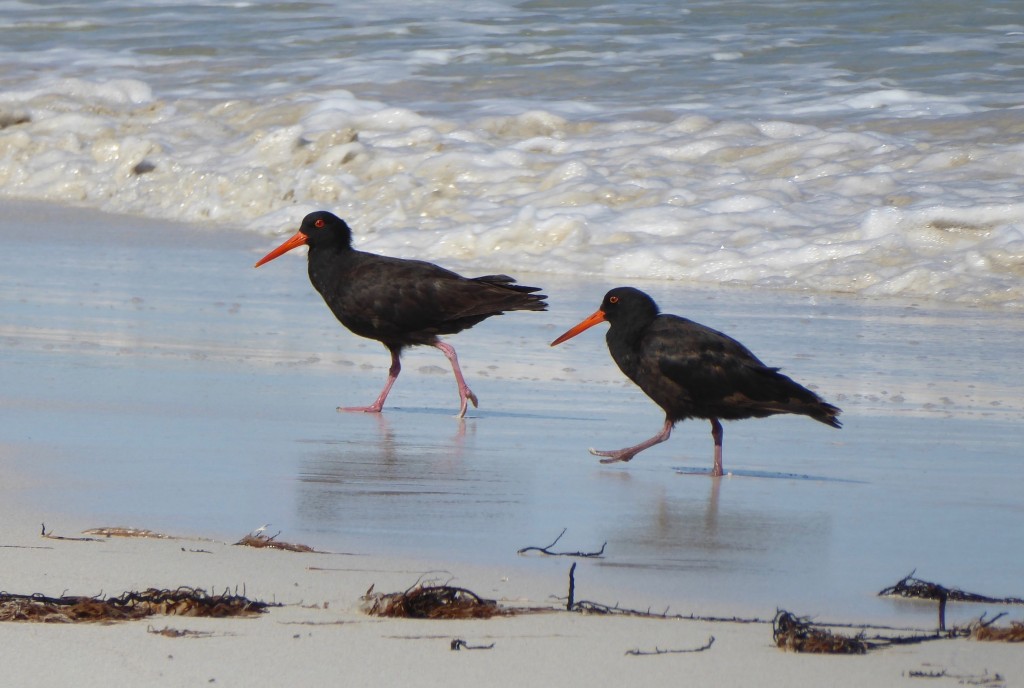
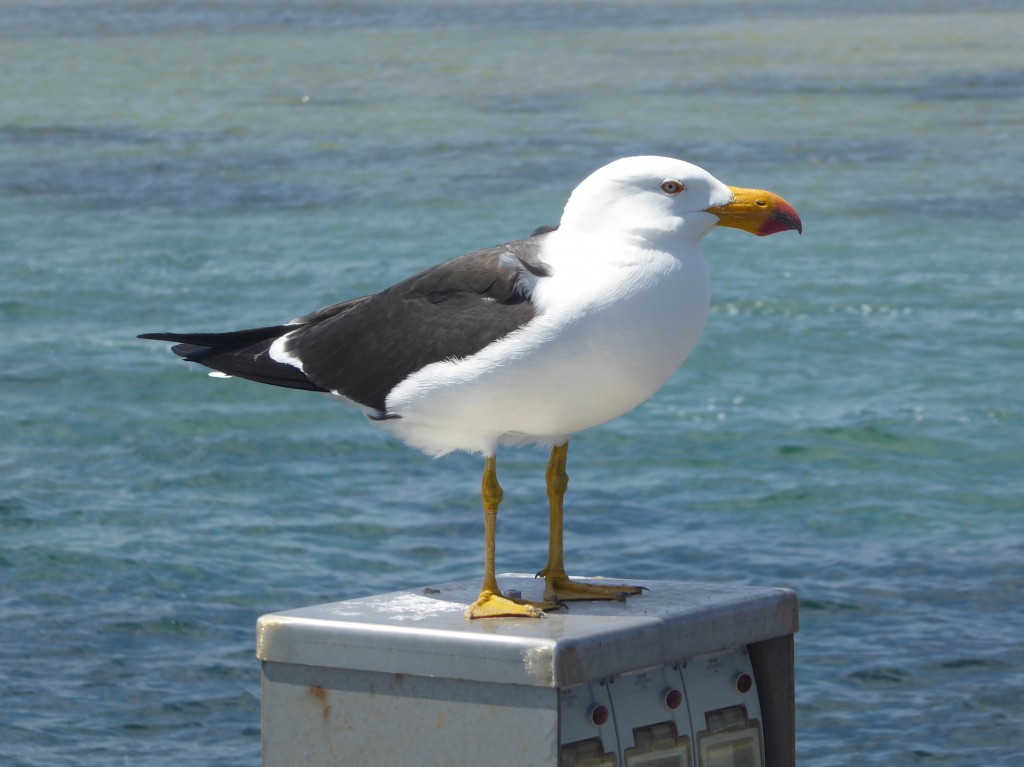 The town is wedged on a narrow strip of land between the ocean and the inner bay. It looks rather precarious from the ocean side:
The town is wedged on a narrow strip of land between the ocean and the inner bay. It looks rather precarious from the ocean side:
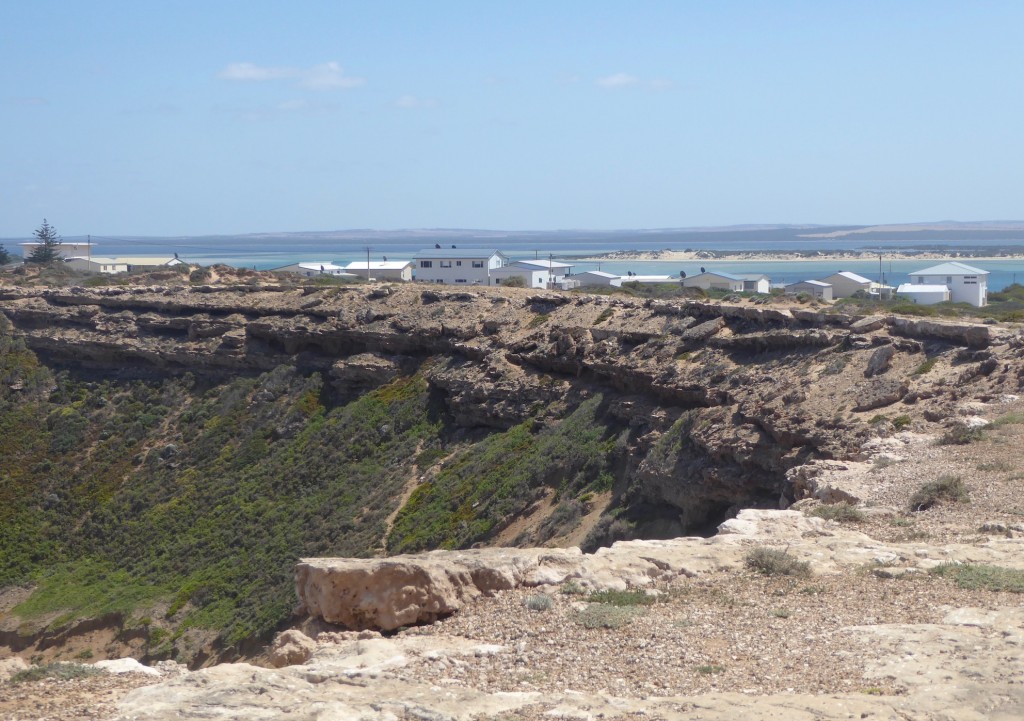 …but very relaxed at this angle (below). There are seven islands within the Bay itself.
…but very relaxed at this angle (below). There are seven islands within the Bay itself.
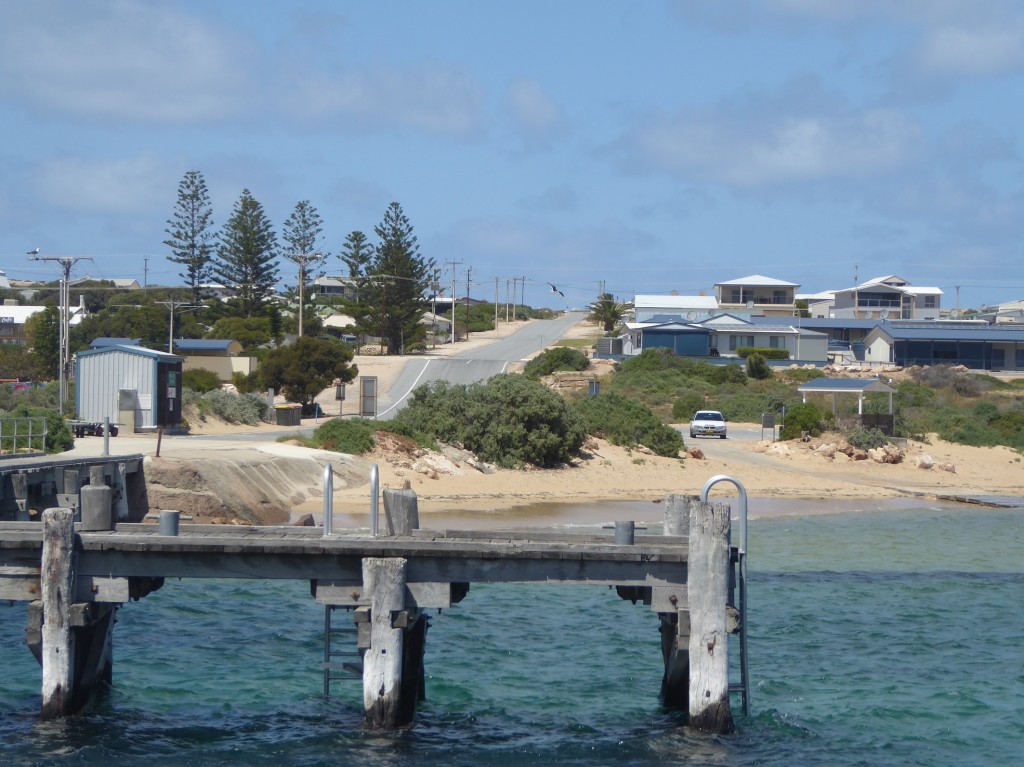 Coffin Bay and a fresh oyster breakfast was next. Just a dozen oysters, two forks and a squeeze of fresh lemon, standing on a boat ramp by the water. Lovely.
Coffin Bay and a fresh oyster breakfast was next. Just a dozen oysters, two forks and a squeeze of fresh lemon, standing on a boat ramp by the water. Lovely.
 With just a night at Port Lincoln along the way, we headed north, out of the Eyre Peninsula, but not before we took another detour to see this amazing artwork on wheat silos at Tumby Bay, painted by Argentinian muralist Martin Ron.We’ve seen a lot of silo artwork on this trip, but this one takes the prize.
With just a night at Port Lincoln along the way, we headed north, out of the Eyre Peninsula, but not before we took another detour to see this amazing artwork on wheat silos at Tumby Bay, painted by Argentinian muralist Martin Ron.We’ve seen a lot of silo artwork on this trip, but this one takes the prize.
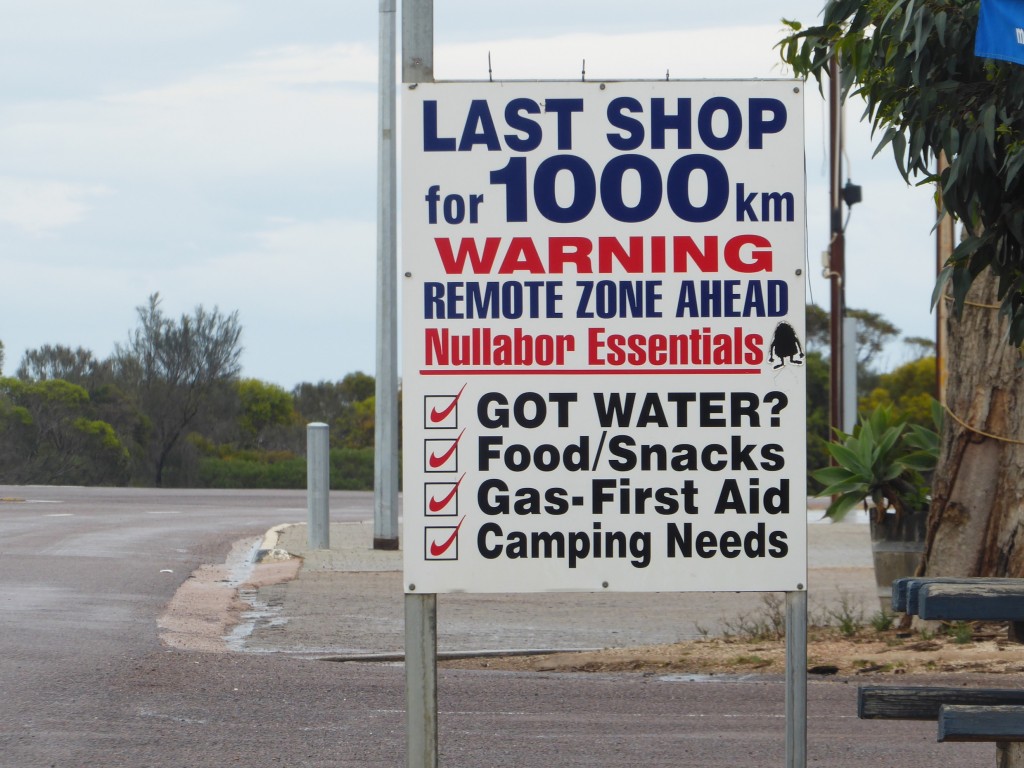
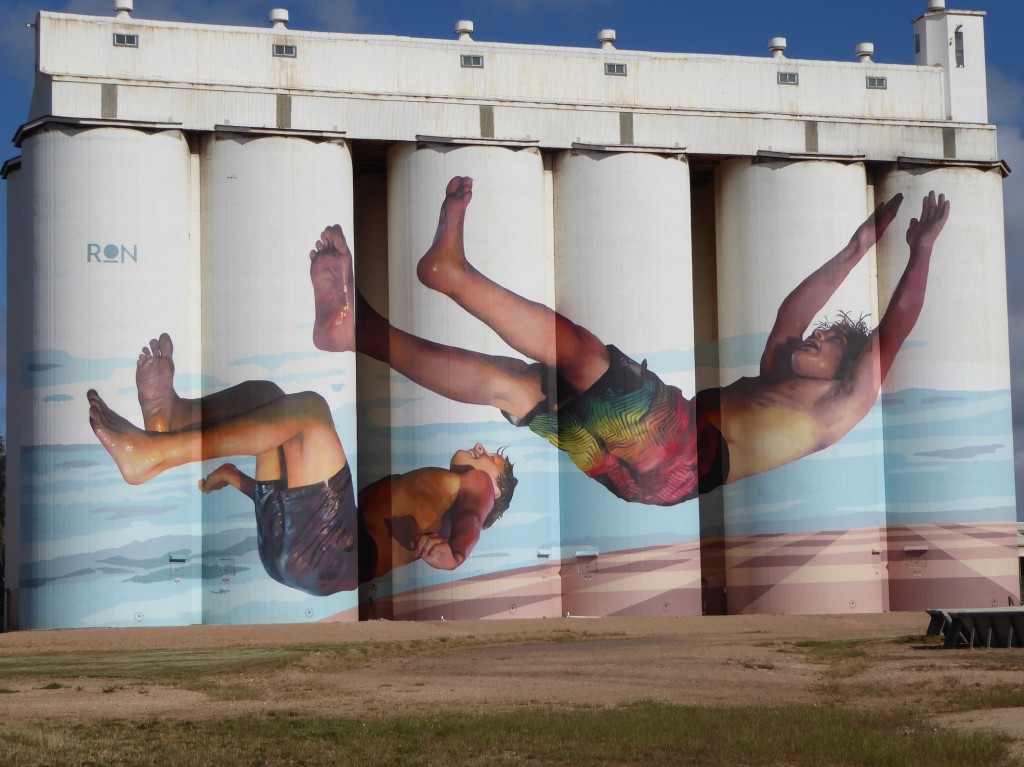
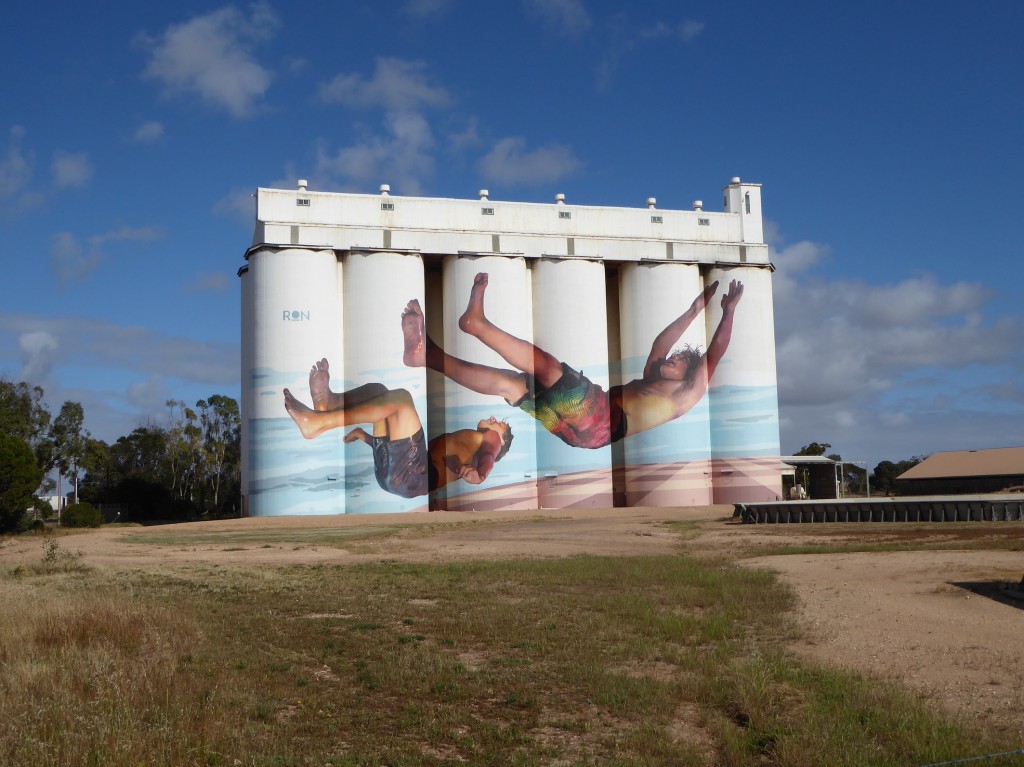
Great write up
Thanks Jill!
More wonderful photos of fabulous landscapes and birds. You’ve being doing it tough with the camping but ….”she persisted” (and he).
Glad you like them Christine. Only one to go…
Enjoying your travels vicariously. I especially like your photos. Thanks and happy Christmas.
Hi I was born in cook in 1956 my father work on the railway up to 1959. Any information on those years will be helpful
Hi Gunther – I’m sorry I don’t know anything much about the railway myself. You could search “Trans Australia Railways” and you should find a lot of information about it.
Kind regards, Joanne